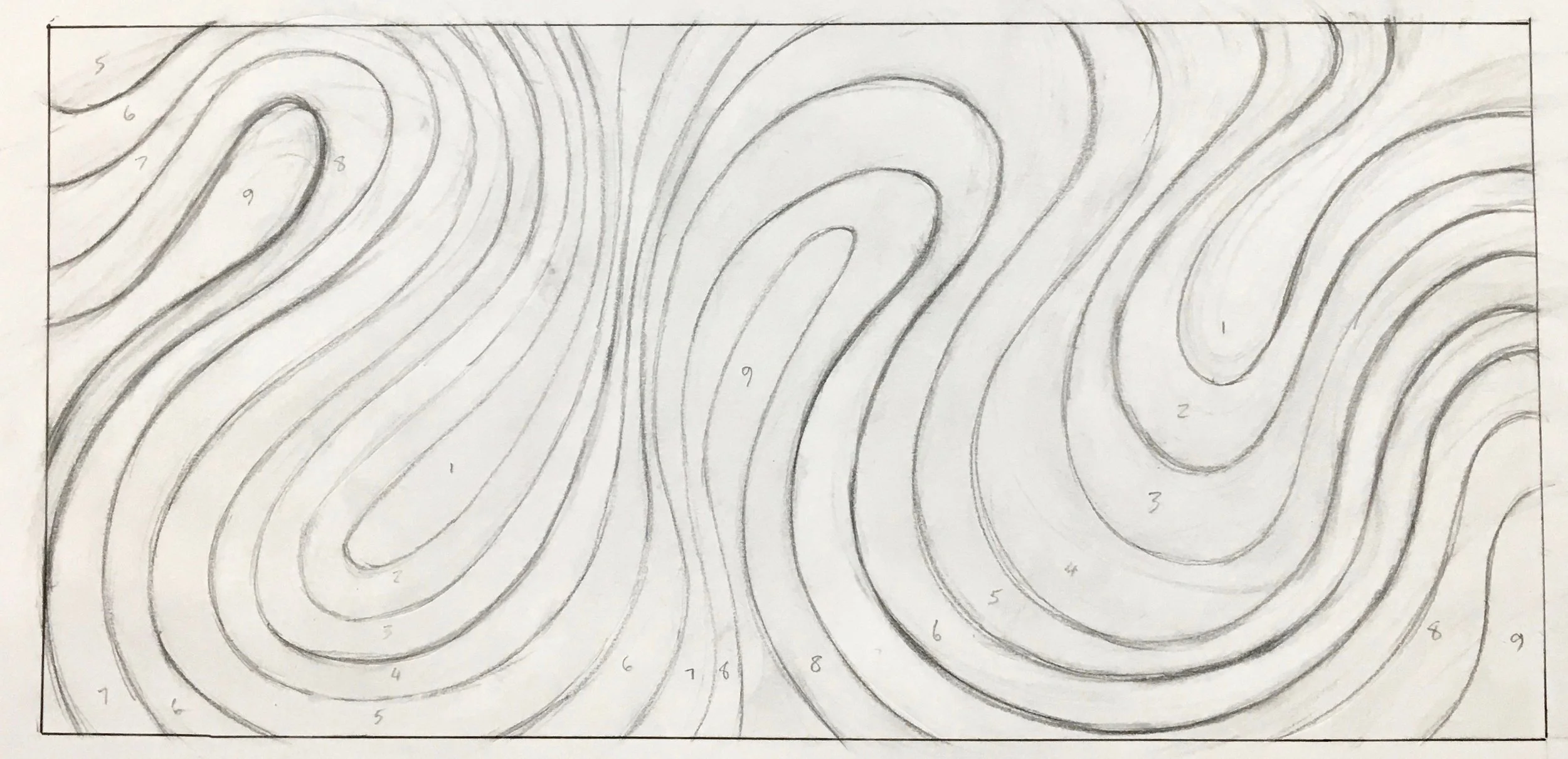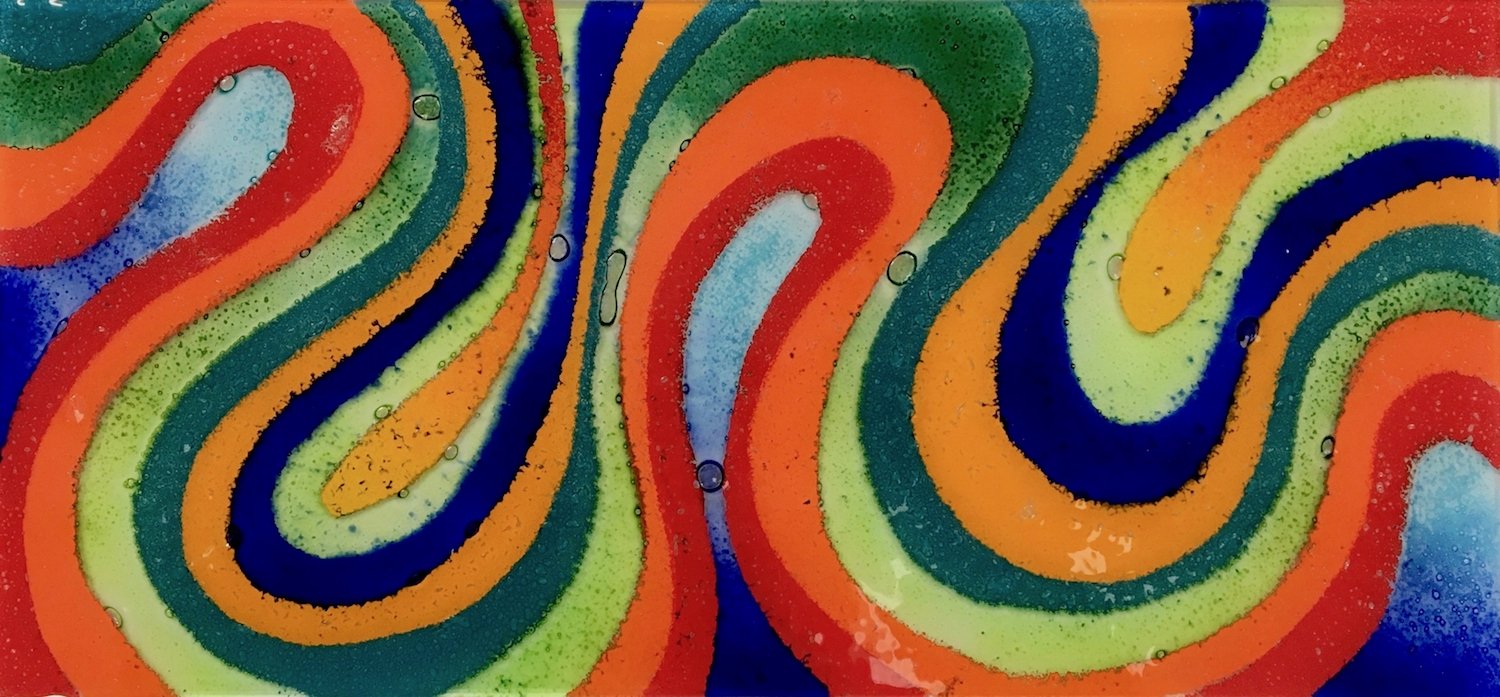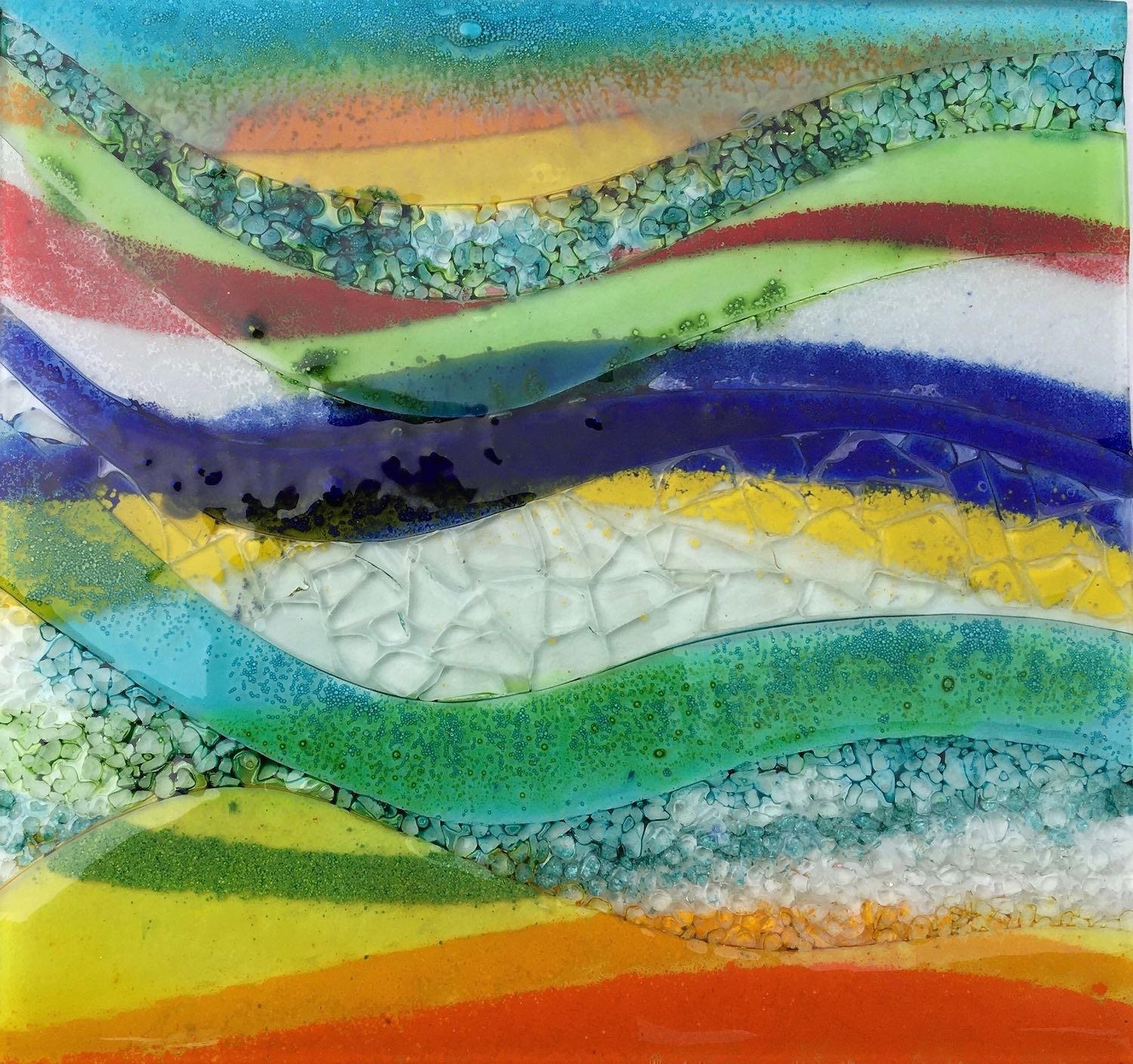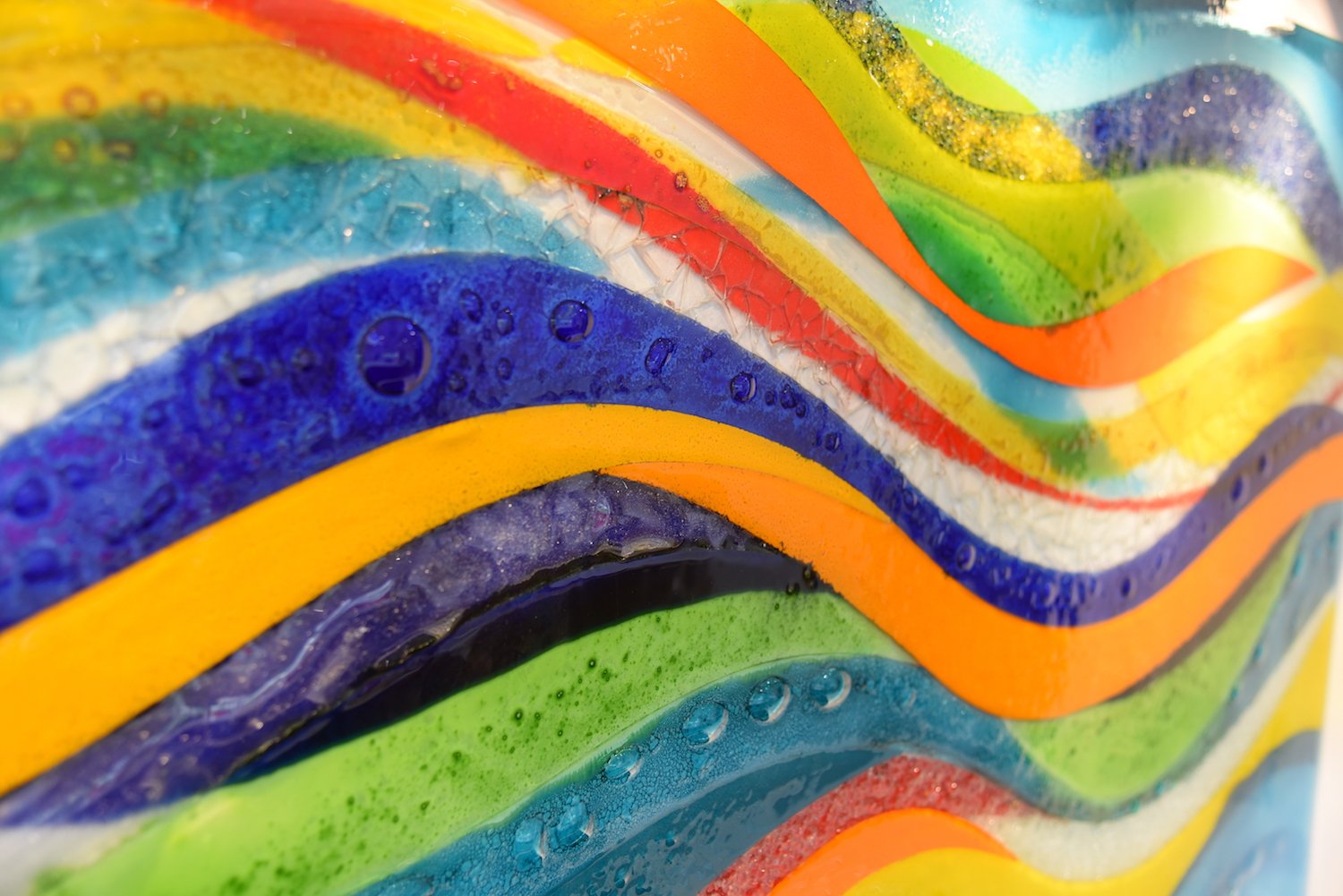Splashback Case Study
A vibrant bespoke kitchen splashback
Sometimes during the course of the commission process, the design direction will change as the client and myself develop the ideas, and this project is a good example.
The brief
The initial brief was to create a wavy style of design for a cooker splashback, in specific shades to coordinate with the bright colours of the client’s dining chair covers.
Initial design ideas
My first step was to produce a series of pencil sketches (13 in total), of different outline wavy forms. The client chose their preferred sketch and then this was tweaked and drawn out to scale.
Samples
Meanwhile, the client had provided me with some fabric swatches of their coloured leather chairs, and I began making individual colour samples in glass to match the leather shades as closely as possible. Once these colours were approved I made up a large sample, so I could show them a scaled down version of the splashback design using these colours.
New direction
On one of their visits to my studio to see the design progress, the client noticed another splashback commission I was working on, and they particularly liked the textures and wave forms I had been creating – and asked if something like these could be incorporated into their splashback, with the overall effect to being vibrant.
So we changed tack a little and I reworked the design to include the crushed glass textures, but in colours to work with their kitchen. As the new design style involved overlapping forms, we needed transparent rather than opaque colours, so I adapted the colour palette so that the predominant shades were transparent and would work well to achieve the desired effects.
I made a new large sample and coloured sketch to show the client. Drawings are usually to be taken only as a guide and I will explain to the client that with this type of design it will be a case of adapting the shapes and layout during the making process – so I ask clients to trust me and allow me to use my artistic judgment as I go along!
The final stage
With the new design approved I could proceed with making the splashback. This involved making several card stencils so that I could mask off each individual area to be coloured separately. The design is built up on multiple layers and needs full concentration not to make a mistake! A splashback in this style will typically take two days to make once the design has been finalised.
My splashbacks are often for customers all over the UK, and I have an excellent courier who transports them very carefully for us. However this particular client lives in Devon, so as part of the service I personally delivered and fitted it, and was able to take some photos of the finished installation.
More Case Studies
How to get in touch
If you are considering a possible architectural glass commission, please get in touch at studio@steverobinsonglass.com to arrange a no-obligation discussion with me.









